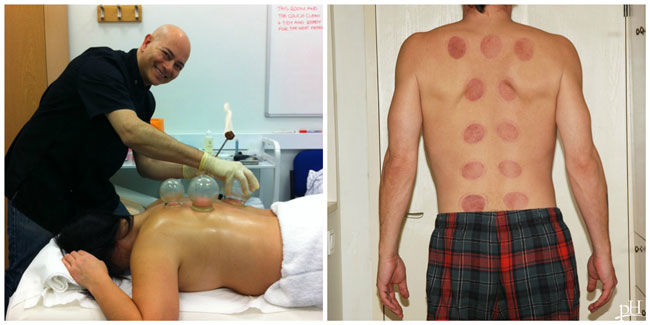The benefits of cupping therapy: Is it worth the crazy circles on your back?
9 years ago | Acupuncture
By pH health care professionals
Remember seeing those reddish cupping marks on top athletes like Michael Phelps during the 2016 Summer Olympics? Many people were unfamiliar with this practice, and wondered what it was all about. What exactly is cupping? What is it used for? Does it work?
If you’ve been curious about cupping, read on. We’ll give you the full scoop.
What is cupping?
Cupping has been around for thousands of years, with roots in traditional Chinese medicine. It is very popular in Asia and the Middle East and is even being practiced in the United States. Typically, glass or bamboo cups are placed on the skin, based on specific acupressure points. In the most common type of cupping, called retained cupping, the cups apply suction by creating a vacuum on the skin, which is probably responsible for its beneficial effects. The cups stay in place for a period of time, such as for 15 minutes. It often leaves round, dark marks or bruises on the skin when the cups are removed – evidence that you have had cupping!
The different types of cupping are retained cupping, flash cupping, moving cupping, wet cupping, medicinal and needling cupping. According to a study, the most common conditions cupping is used for are muscle pains (like back pain), generalized pain, shingles, nerve pain (like headaches) and sciatica. The main purpose of cupping is to relieve pain, although it has also been used in acne, coughs, asthma and other conditions.
How is cupping beneficial?
Research states it can help skin blood flow, increase pressure pain threshold in certain parts of the skin, reduce swelling and inflammation, improve the immune system, and can even improve sugar levels in diabetic patients.
Are there negative side effects though?
Though relatively safe, it can cause adverse effects, which include skin infections, abscesses, dark spots and hematomas, which could be life-threatening.
A medical literature search revealed hundreds of studies on cupping. Though these studies showed that it works, more studies need to be done, especially on its long-term safety and the types of conditions it is good for. In the meantime, if you want to try it, make sure you visit an experienced cupping therapist.
Enjoy Your Healthy Life!
The pH professional health care team includes recognized experts from a variety of health care and related disciplines, including physicians, health care attorneys, nutritionists, nurses and certified fitness instructors. To learn more about the pH Health Care Team, click here.







